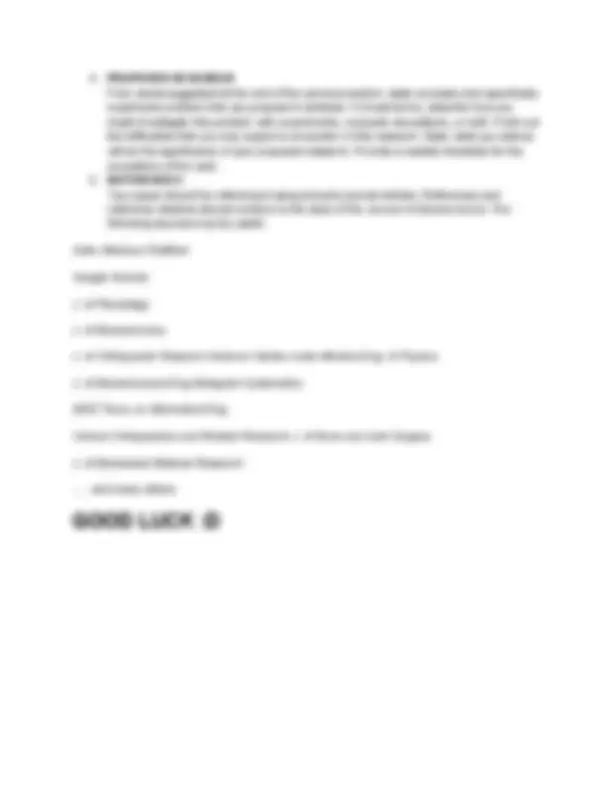



Study with the several resources on Docsity

Earn points by helping other students or get them with a premium plan


Prepare for your exams
Study with the several resources on Docsity

Earn points to download
Earn points by helping other students or get them with a premium plan
Community
Ask the community for help and clear up your study doubts
Discover the best universities in your country according to Docsity users
Free resources
Download our free guides on studying techniques, anxiety management strategies, and thesis advice from Docsity tutors
Full assignment for KIN3341 with practice questions and solutions.
Typology: Assignments
1 / 3

This page cannot be seen from the preview
Don't miss anything!


This assignment will give you a chance to deepen your knowledge in an area of biomechanics that interests you. We expect that you will remember what you learn from writing this paper long after the class is over. This assignment will get you into the literature where you can see for yourself the results of biomechanics research. This paper may also serve as a springboard for your future independent studies or research projects. The assignment will help hone your critical reading and writing skills, which are helpful in many endeavors. This will also give you some team project experience.
Survey the literature on a specific topic in the field of movement biomechanics. Describe the current state-of- the-art and suggest areas that require further research. Then briefly describe how you would investigate a specific problem yourself. Some general areas from which you can choose a topic include: sports biomechanics, measurement of muscle strength, development of muscle strength, motion and gait analysis, dynamic simulations of movement, biomechanics of surgical reconstructions, functional neuromuscular stimulation, joint biomechanics, electromyography, muscle biology and mechanics, muscle models, muscle injury, motion analysis equipment and techniques, animal locomotion, neural control of movement, robotics, computer- assisted surgery, medical imaging, biomedical computation and visualization, computer animation, digital creatures, evolution of gait, or other areas related to biomechanics of movement. From these general areas you should choose a specific topic to investigate. Some topics and titles are listed below.
Gait analysis for surgical planning: benefits and limitations The influence of energy storing prosthetic feet on knee motion in below knee amputee walking The variation of muscle physiological cross-sectional areas with aging Optimization techniques for calculating muscle forces Strength of muscles crossing the shoulder and elbow Surgical planning using medical imaging The role of muscles in providing joint stability Robots that walk and hop Quantification of spasticity
Computer-assisted design of functional neuromuscular stimulation systems The influence of dynamic coupling on motor planning in the upper limb Animation of body motion: from biomechanics to entertainment Biomechanics of bicycling: the role of two-joint muscles Effects of bone deformities on muscle moment arms Robot-assisted surgery knee surgery Muscle-tendon adaptation with immobilization Scaling in musculoskeletal structures In vivo imaging of joint kinematics Molecular motors: the engines of life Wrist joint replacements: successes and failures Muscle strength and its development Force-feedback devices: why fool the CNS? The written paper should include the following sections:
1. TITLE